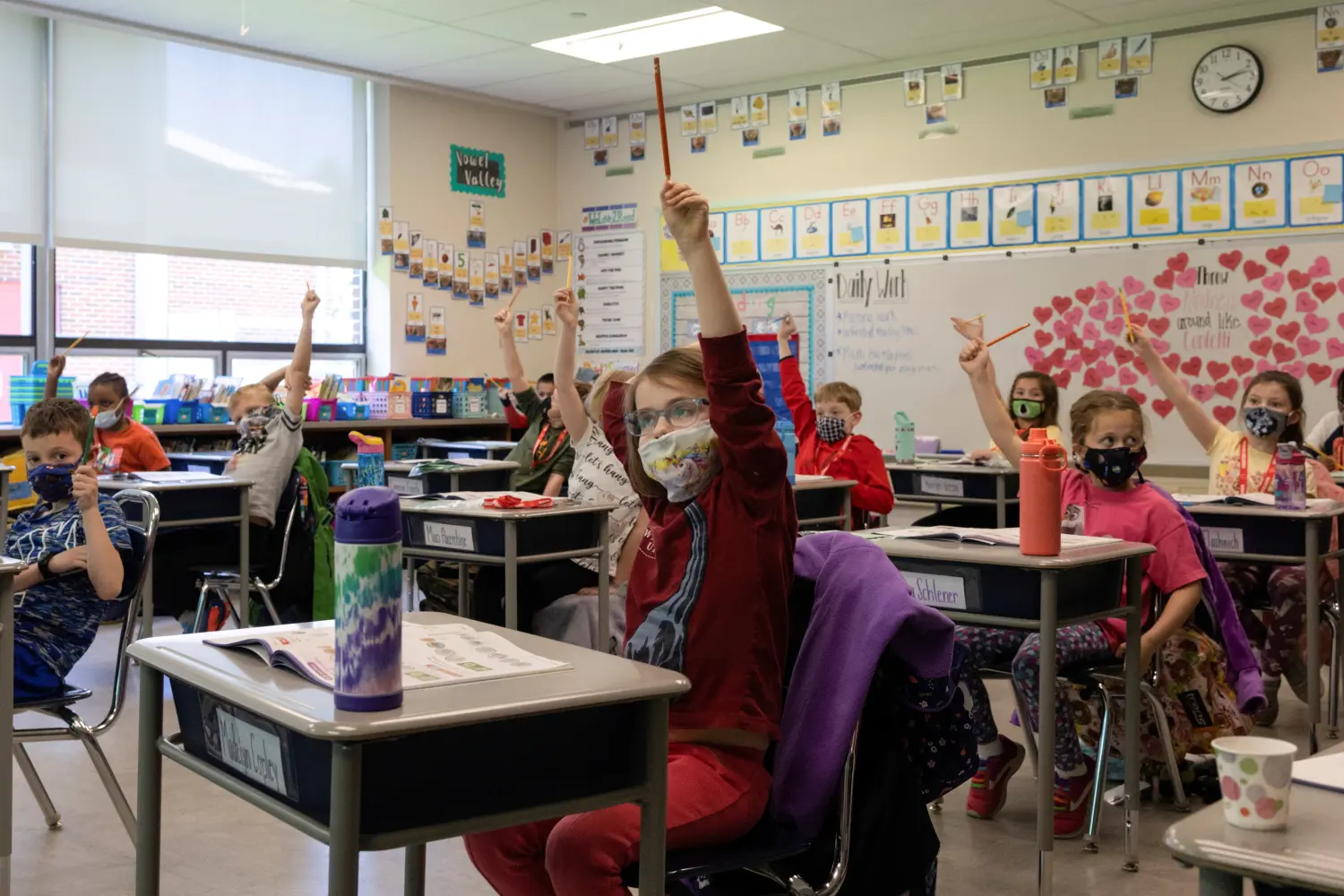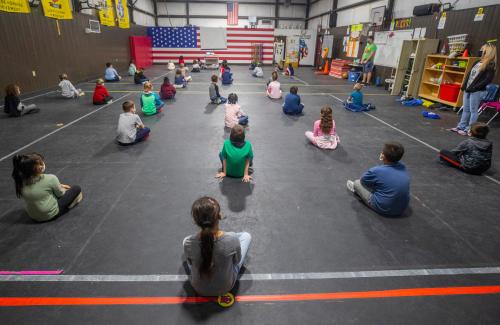Since March 2020, researchers have produced more than 300 reports on the effects of the COVID-19 crisis on young children’s learning and on the early care and education (ECE) programs that serve them. Very quickly, ECE leaders facing the urgent day-to-day demands of COVID-19 response also faced a deluge of evidence—far more than they could efficiently find, sort, and use.
To help provide policymakers with a clear understanding of the pandemic’s effects on young children’s learning and ECE programs, our team of 16 early childhood experts and 10 early childhood policy leaders recently released a summary of this evidence base. We reviewed 76 high-quality studies in depth, spanning 16 national studies, 45 studies in 31 states, and 15 local studies. Our work illuminated a national story of learning setbacks and unmet needs, for which we offered evidence-backed, equity-centered policy solutions.
But another advantage of taking stock of what we know was discovering what we don’t know. Our in-depth review revealed six takeaways about where research in this area should go next. Especially given that American Rescue Plan funds can be used to build research capacity in state and local agencies, our hope is that a clear statement of what stakeholders need to know next is helpful for producing new evidence to guide investments going forward.
Here are six priorities for future research going forward:
- Continue to track recovery for children, families, teachers, and programs. We likely have just scratched the surface of the effects of this fluid, complex crisis. The Delta variant raises new questions about health and safety, and young children have yet to be vaccinated. Extending studies of the effects of the crisis on children’s learning, the supply of ECE programs, and early educators’ experiences is essential for targeting supports and ensuring equitable solutions.
- Document changes to ECE programs and children’s experiences that are not captured in existing data. We have lots of evidence that shows the many changes ECE programs made to enhance health and safety, but we have only crude teacher reports on the effects of these changes on children’s classroom experiences. As vaccination rates increase, a return to direct observations of ECE classrooms—commonly done at large scale prior to the crisis—should be used to support both children and teachers. How are young children spending their time? Has instructional quality declined as teacher reports indicate? In what areas do teachers need support? Widely used and newer measures can answer these questions and inform instructional and policy decisions in the new normal.
- Measure learning outcomes for the youngest learners directly and across multiple domains. We found no data from direct assessments of children’s skills prior to kindergarten, and very little data outside of the literacy domain for kindergarten through second grade. We have parent and teacher reports on the youngest children that paint a worrisome picture, but the psychometrics of such measures can be questionable. The K-2 direct assessments we have show consistent and large learning setbacks, particularly for children typically marginalized in the U.S. education system. And many children, especially children from households with low incomes and children of color, are missing from recent data. Direct assessments are critical for meeting young children where they are, targeting resources effectively, and guiding investment decisions.
- Collect systematic data on the ECE workforce. Many studies have detailed how the ECE workforce suffered in the crisis, with the pandemic magnifying longstanding issues like very low pay, limited benefits, and few professional supports, particularly among teachers in child care and family child care settings. In the face of new challenges, early educators also reported new professional-development needs, including training on health and safety, remote learning, and meeting the needs of dual language learners (DLLs). Unlike in K-12, where extensive data is collected about the teaching workforce, few states systematically collect data about early educators. Collecting such data across sectors will be essential as new investments are made. ECE workforce issues commonly undercut investments and early educators are at the heart of ensuring the high-quality experiences that help young children thrive.
- Prioritize research on groups hit hardest. We know the effects of the pandemic have not been borne equally, but we found no data on some key populations such as young children from homeless families, children experiencing bereavement, children from migrant families, and Asian-American children amid the spike in Asian-American hate. Data on other critical populations like DLLs, children with disabilities, and Native-American children are sparse. Equity-centered, evidence-backed decision-making requires more data on young children who belong to groups that have suffered more in the crisis.
- Evaluate the impacts of new investments. We will need additional rigorous, fast-turnaround research as states and localities make high-stakes policy and spending decisions and families make decisions about their children’s care and education in the next chapter of the crisis. Decisions on a set of wide-ranging topics (e.g., program eligibility, teacher compensation and professional supports, and interventions for students needing help) both provide unique opportunities to study bold policy and have the potential to make lasting impacts. As an example, Gov. Gretchen Whitmer in Michigan—a state hit particularly hard by the crisis—recently announced historic investments in both child care and preschool, including expanding access and improving teacher pay. Maine and Washington state also announced important new investments. Documenting state and local policy choices and their impacts is essential. Doing so will help legislartors make decisions about how best to allocate recovery dollars, and will ensure that what we learn from these historic investments will inform longer-term efforts to build truly high-quality ECE systems.
We titled our summary: “Historic crisis, historic opportunity.” The March 2021 American Rescue Plan was the largest public investment in early care and education in U.S. history. Smart and rigorous research, especially in partnership with decision-makers, has a critical role to play in pivoting from crisis to opportunity in ECE. Our young children and early educators deserve no less.
The Brookings Institution is committed to quality, independence, and impact.
We are supported by a diverse array of funders. In line with our values and policies, each Brookings publication represents the sole views of its author(s).










